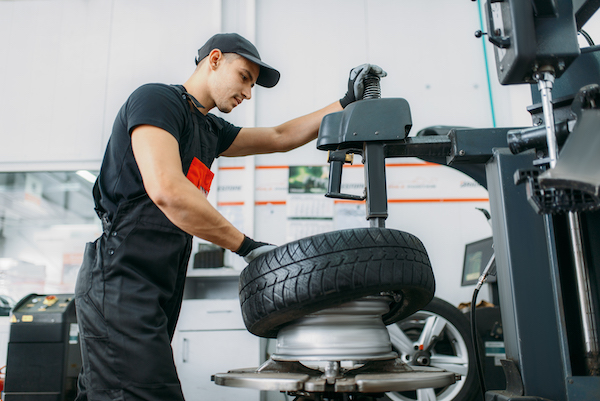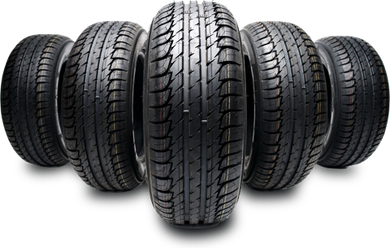Don't Miss Out on Mopar Tire Service Specials: Budget Friendly Upkeep Plans
Don't Miss Out on Mopar Tire Service Specials: Budget Friendly Upkeep Plans
Blog Article
Tire Solution: The Impact of Weather Conditions
When it comes to making sure ideal efficiency and safety and security on the road, recognizing the impact of climate problems on tire solution is vital. In this discussion, we will explore the elaborate connection in between weather condition problems and tire solution, losing light on the value of weather-specific tire upkeep techniques and factors to consider.
Warmth and Tire Performance
When subjected to heats, tires experience adjustments in performance that can dramatically impact vehicle safety and handling. The warm created from extended driving or warm climate conditions triggers the tire rubber to soften, leading to reduced walk life and raised wear. As the rubber comes to be softer, the tire's grasp on the roadway diminishes, influencing stopping ranges and general grip. In extreme situations, too much warmth can even trigger tire blowouts, posturing a severe safety and security danger to the lorry and its owners.
Additionally, heats can accelerate the process of tire aging, triggering the rubber to degrade faster. This can lead to cracks, protrudes, and other kinds of damage that jeopardize the structural integrity of the tire. To mitigate the effects of heat on tire performance, drivers should regularly check their tire stress, revolve tires to ensure also use, and check for any indications of damage. Additionally, using tires especially developed to stand up to heats can aid maintain optimum performance and safety and security when traveling.
Winter Effects
Cold climate conditions can have a substantial effect on tire performance and security. In cold climate, tires might also shed air stress a lot more quickly, which can impact handling and gas performance.
To reduce the results of winter on tires, it is vital to consistently check tire pressure and inflate them to the manufacturer's suggested levels. Using winter season or all-season tires designed for winter problems can additionally improve traction and hold on icy or snowy roads - mopar tire service specials. Appropriate tire upkeep, including routine evaluations for wear and damages, ends up being a lot more critical during chillier months to make sure optimal efficiency and safety and security
Rainy Conditions Effect
Tires with worn-out footsteps are more prone to hydroplaning, where a layer of water develops up between the road and the tire surface area, leading to loss of traction. To combat this, motorists should on a regular basis check their tires for ample step deepness and take into click to read more consideration investing in tires especially developed for damp conditions.

Snow and Tire Security
When driving in snowy problems, having the ideal tires can make a considerable difference in security and performance. Winter months tires are designed with unique rubber compounds and step patterns to offer better traction on snow and ice compared to all-season tires.
Along with using wintertime tires, it is critical to ensure they are correctly blown up. Cold weather condition can cause tire pressure to go down, influencing traction and handling (mopar tire service specials). Regularly inspecting and keeping the proper tire stress is necessary for optimal performance in snowy problems

Weather-Related Tire Upkeep
When confronted with numerous climate problems, proper tire maintenance ends up being a crucial facet of car security and performance. Weather-related tire maintenance incorporates a series of practices aimed at ensuring optimum tire feature and durability in various climate situations. One vital element of weather-related tire upkeep is tire stress regulation. Changing temperatures can trigger tire pressure to vary, affecting traction and fuel efficiency. Routinely changing and examining tire stress according to manufacturer suggestions is vital for risk-free driving in changing weather. In addition, tire tread depth plays a significant function in taking care of different weather aspects. Tires with adequate step deepness give better grasp on damp or icy roads, reducing the threat of hydroplaning or skidding. When walk wear gets to a particular depth is important for preserving grip and security in negative weather, inspecting tire tread routinely and changing tires. By prioritizing weather-related tire maintenance, vehicle drivers can enhance safety and security, improve lorry efficiency, and extend the life expectancy of their tires.
Verdict
In conclusion, weather conditions have a considerable impact on tire efficiency and safety (morris tire and alignment). From heat influencing tire pressure and wear to cool weather condition minimizing traction, it is essential to why not check here think about the climate when keeping and using tires.
In this discussion, we will check out the intricate connection between climate problems and tire service, losing light on the importance of weather-specific tire upkeep methods and factors to consider.

Report this page